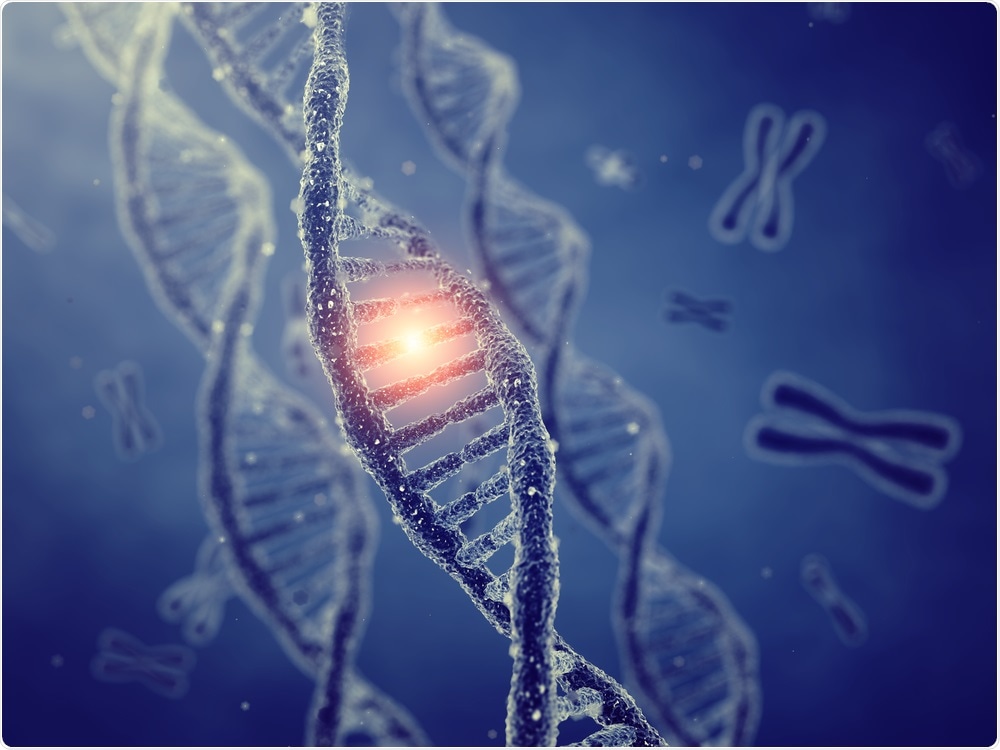Cell-type databases are increasing in size and complexity as researchers accumulate a great deal of gene-sequencing data. As such, it is important to learn where different cell types are found in the body and to trace their gene expression patterns into particular organs and tissues.

Gene. Image Credit: nobeastsofierce/Shutterstock.com
A gene, for instance, can be actively expressed in one cell but inhibited in another. In situ hybridization is one way to map genes into tissues. In other words, a target gene is “hybridized” or tagged with a fluorescent marker inside the segments of the tissue located in the “in situ” part.
These segments are subsequently viewed under a dedicated microscope to determine where the gene “lights up.” Then, successive images of each segment are put together to create a “spatial” map of the position of the gene within the tissue.
The difficulty with in situ hybridization-based methods is that as the number of target genes increases, they get more complicated, need dedicated instruments, and force investigators to pre-select their targets, which can be a time-consuming process if the aim is to rebuild a complete map of the distribution of genes across tissues.
“Spatializing” sequencing data
Researchers from EPFL’s School of Life Sciences have now developed Tomographer, a computational algorithm, that can convert gene-sequencing data into spatially resolved data, like photographs, without using a microscope. The study was performed by Gioele La Manno’s research team and was recently published in the Nature Biotechnology journal.
The new Tomographer technique involves cutting the tissue along the target axis into successive sections, and each of this section is then cut into tissue strips at various angles. Cells from the strips are subsequently split to obtain their entire messenger RNA (mRNA).
Every mRNA matches with a gene that was active in the cell. The measurements obtained from the strips can then be utilized as an input to the Tomographer algorithm to rebuild spatial gene-expression patterns across the tissue.
The Tomographer algorithm opens a promising and robust path to "spatialize" different genomics measurement techniques.”
Gioele La Manno, Ecole Polytechnique Fédérale De Lausanne
As an application, the researchers utilized the Tomographer algorithm to spatially plot the molecular anatomy of the brain of the Australian Bearded Dragon Pogona vitticeps—a non-model organism—proving the versatility of the algorithm.
Ever since I started med school, I have been admiring the way computer tomography revolutionized the way we examine organs and body parts. Today, I am very proud to be part of a team that has developed a molecular tomography technology. So far, we have focused on applications in neurodevelopmental biology, but in the future, we can certainly imagine molecular tomography becoming a constituent in personalized medicine.”
Christian Gabriel Schneider, Study Lead Author, Ecole Polytechnique Fédérale De Lausanne
“It was an exciting opportunity to develop an accessible and flexible computational method that has the potential to facilitate progress in the health sciences. I am very much looking forward to seeing what other spatially resolved biological data forms will be brought to light with Tomographer,” concluded Halima Hannah Schede, the other lead author of the study.
Source:
Journal reference:
Schede, H. H., et al. (2021) Spatial tissue profiling by imaging-free molecular tomography. Nature Biotechnology. doi.org/10.1038/s41587-021-00879-7.